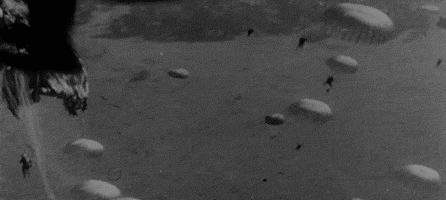Impact is keen to get boots on the ground at Burns lookalike

Pic:getty
Impact Minerals (ASX:IPT) has a full schedule ahead with drilling at its Apsley porphyry copper-gold prospect poised to begin shortly along with other activities.
Drill pad preparation at the prospect in New South Wales’ Lachlan Fold Belt will begin next week with drilling to expected to begin within a few weeks once the rig completes its current contract elsewhere.
However, it is the identification of its 80 per cent owned Doonia gold project as a potential lookalike of Lefroy Exploration’s (ASX:LEX) Burns project just 20km to the south that has the company quivering with excitement.
Both areas were first identified by the same regional exploration program carried out by WMC Resources though no further work was recommended at that time despite broad spaced aircore drilling returning modest gold anomalism.
However, Lefroy’s drilling success at Burns – such as the recent 20m intersection grading 12.2 grams per tonne (g/t) gold – clearly highlights that WMC’s drill spacing was inadequate for the regolith environment that occurs under and around salt lake environments.
Impact notes that there are two strong geological similarities between Burns and Doonia.
Both projects have similar sized modest positive magnetic anomalies with the response at Burns being due at least in part to the gold-copper mineralisation being directly associated with magnetite alteration while the source of the magnetic anomaly at Doonia remaining unknown.
Additionally, mineralisation at Burns is characterised by a metal association of copper-molybdenum-silver-bismuth-tellurium-arsenic.
While Doonia has only been assayed for copper-bismuth-arsenic in previous soil geochemistry data, this result and other metals assayed for has allowed Impact to identify a very distinct and coherent zoned geochemical anomaly that was not recognised by WMC.
A core area of gold and bismuth about 2,500m long and 1,000m wide occurs in the middle of the project area.
This overlies numerous small magnetic anomalies visible in the regional magnetic data and is also coincident with a nickel-copper-zinc soil anomaly that covers an area of about 2,500m by 2,000m.
These results are interpreted to be potentially related to a gold-bismuth mineralised system that will be the target of expedited exploration once the tenement is granted.
Other projects
At Apsley, the company has defined a number of compelling coincident geochemical and geophysical anomalies over a 4sqkm area that are characteristic of those around major alkalic porphyry copper-gold deposits, such as Cadia and North Parkes in the same region.
Impact plans to do up to 3000m of reverse circulation drilling of the new priority targets.
The company is also interpreting the final assay results from drilling at the Plat Central platinum group metals-copper-nickel prospect within its Broken Hill project in NSW.
Previous where exploration had defined a number of Kambalda-style channels at the base of the target ultramafic unit.
The channels were discovered by the company’s use of a powerful geochemical ‘vector’, or signpost, which intensifies towards higher grade nickel-copper-PGEs.
This vector was first identified at the Platinum Springs prospect within the same project.
Over in WA, the company will interpret recently received regional airborne magnetic data covering its large Arkun PGM-copper-nickel project about 150km east of Perth.
This data will be used to define major structures and target host rocks that are prospective for magmatic nickel-copper-PGM sulphide deposits similar to Chalice’s Julimar discovery.
Follow up field checking and soil geochemistry surveys will be planned over targets identified.
This article was developed in collaboration with Impact Minerals, a Stockhead advertiser at the time of publishing.
This article does not constitute financial product advice. You should consider obtaining independent advice before making any financial decisions.

UNLOCK INSIGHTS
Discover the untold stories of emerging ASX stocks.
Daily news and expert analysis, it's free to subscribe.
By proceeding, you confirm you understand that we handle personal information in accordance with our Privacy Policy.








